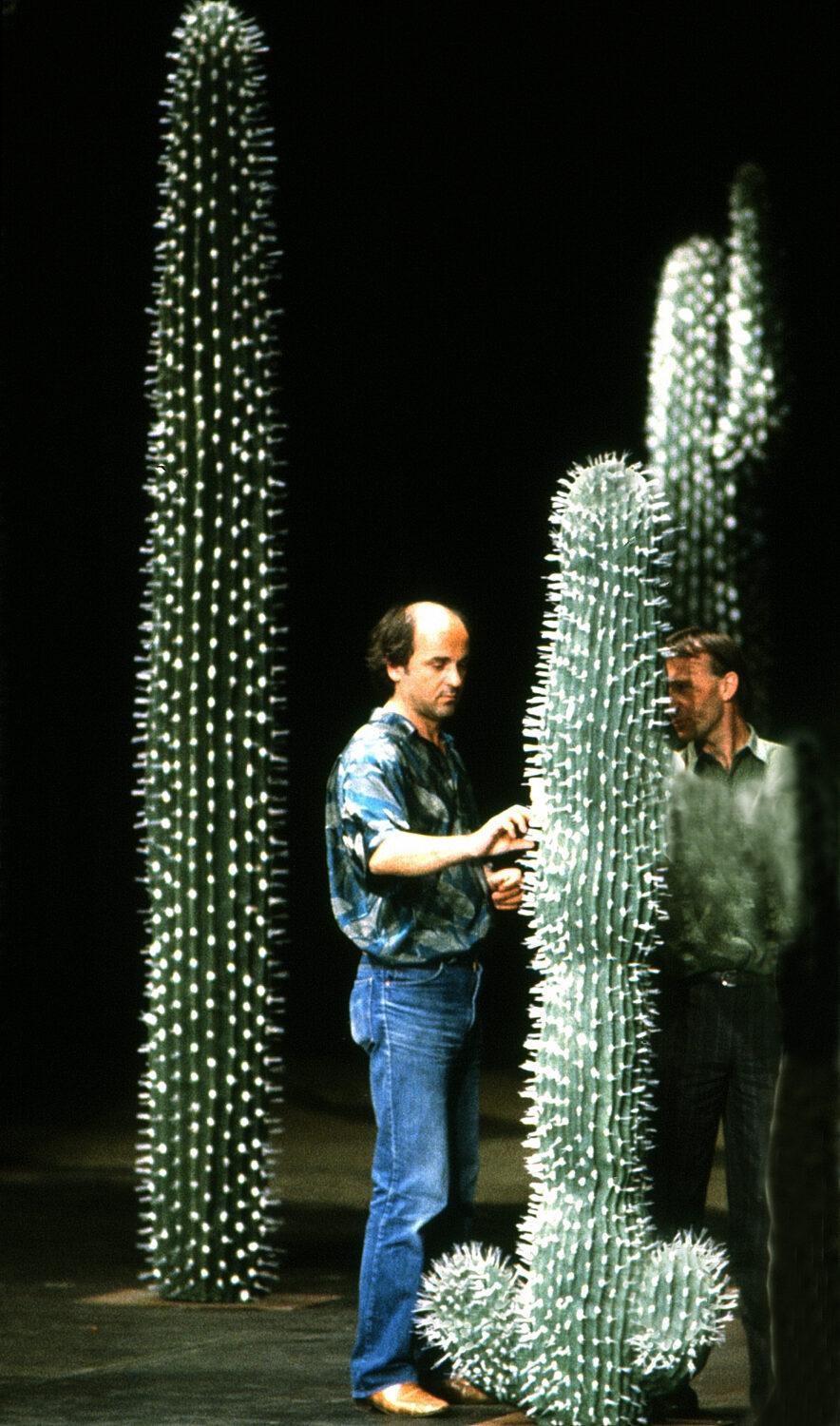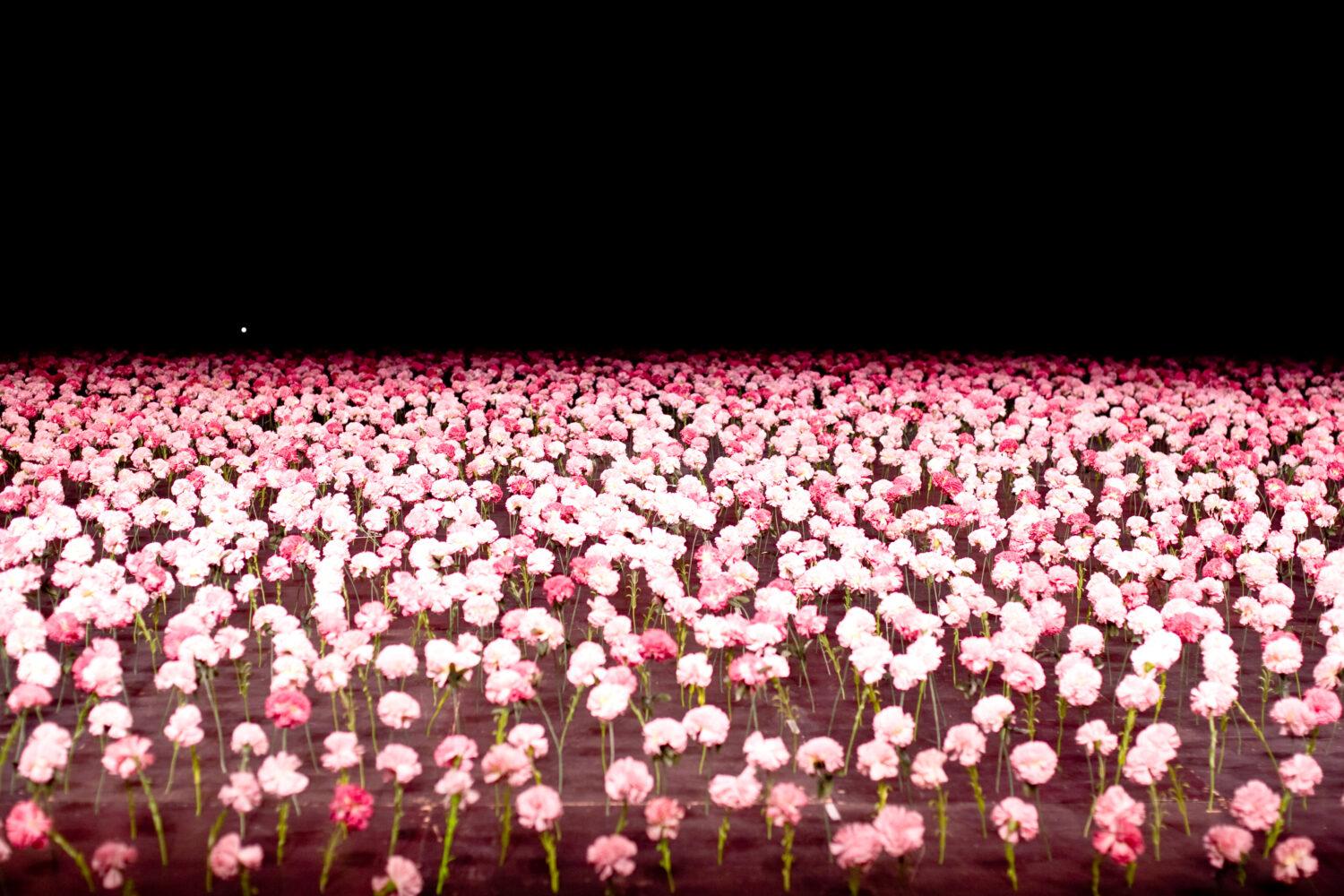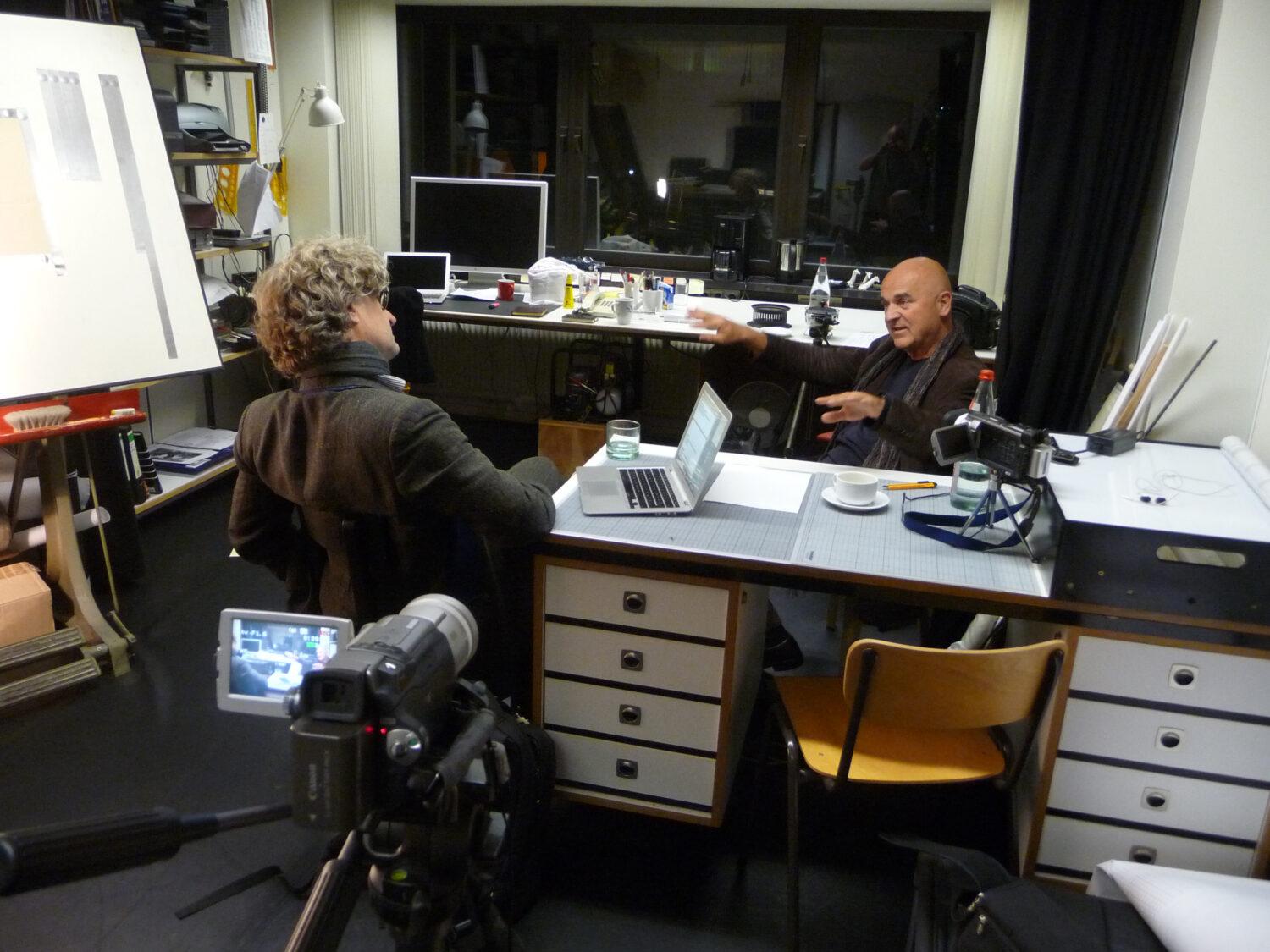Peter Pabst
En 1980, Peter Pabst conçoit sa première scénographie pour une pièce de Pina Bausch.
C'est le début d'une des plus longues collaborations de l'histoire du théâtre, une relation artistique et personnelle extrêmement intense, une symbiose dans le travail qui ne prendra fin qu'avec la mort de Pina Bausch en 2009.
Informations
| 1944 | né à Grätz |
| 1969 bis 1973 | étudie les costumes et la scénographie avec Max Bignens aux Werkschulen de Cologne |
| 1973 bis 1979 | travaille comme scénographe au Schauspielhaus de Bochum, principalement pour Peter Zadek et Augusto Fernandes |
| Depuis 1979 | travaille en indépendant comme scénographe et créateur de costumes pour plus de 100 productions théâtrales, de danse, d'opéra, de cinéma et de télévision dans presque toutes les grandes villes européennes, en Amérique et en Asie. |
| 1980 bis 2009 | conçoit et réalise 26 scénographies pour Pina Bausch, dont l'opéra Le château de Barbe-Bleue au Festival d'Aix en Provence |
| 1991 | Décoré de la médaille Josef Kainz de la ville de Vienne |
| 1992 | Nommé au grade de "Chevalier des Arts et des Lettres" |
| 2008 | Exposition Räume - Träume au Kunstmuseum de Bochum |
| 2010 | Publication de PETER FÜR PINA, un livre sur son travail de 29 ans pour Pina Bausch et le Tanztheater Wuppertal |
| 2010 | Attribution du titre de "professeur" par le ministre-président du Land de Rhénanie-du-Nord-Westphalie |
| 2014 | Expositions Vorsichtshalber Vorsichtigb(Précautionneusement prudent) au parc de sculptures Waldfrieden de Tony Cragg à Wuppertal et So schön wie möglich(Si beau que possible), dans les ateliers de la Wuppertaler Bühnen |
| 2014 | Remise du prestigieux Von Der Heydt-Kulturpreis de la ville de Wuppertal |
| 2019 | Exposition Weiß-Rot-Pink-Grün (Blanc-Rouge-Rose-Vert), au musée Picnic à Séoul (Corée du Sud) |
Biographie
Peter Pabst was born in 1944 in Grätz and spent his early years in East Berlin. The family moved to Frankfurt am Main in 1954. Before finishing highschool, he began an apprenticeship as a dressmaker in Frankfurt and discovered the world of haute couture while working with Elise Topell in Wiesbaden. When he had the opportunity to work as an assistant to director of costume Kurt Palm in Bayreuth, costume design became his new interest. From 1969 he studied costume and stage design at the Cologne Werkschulen under the Swiss Max Bignens, who advised him to apply to Peter Zadek in Bochum. The encounter between the two established a lifelong friendship and working relationship. From 1973 to 1979 he was a permanent member of the Bochum theatre staff.
Peter Pabst is used to crossing boundaries. Since 1979 he has been working as a freelance set and costume designer in theatre, opera, dance, film and television, and up to now has created and realised stage sets and costumes for more than 100 theatre and film productions. His work has taken him to almost every major European city, as well as America and Asia, and he has collaborated with Luc Bondy, Klaus Maria Brandauer, Robert Carsen, Chen Shi-Zheng, Tankred Dorst, Jürgen Flimm, Udo Lindenberg, Johannes Schaaf, Andrei Serban, Istvan Szabo and Wim Wenders, among others.
Meeting Pina Bausch
The addition of a further genre, dance, seemed at first simply an optional extra. Pabst had already met Pina Bausch and her set and costume designer Rolf Borzik in Bochum in 1977. After Borzik's death, Pina Bausch invited Pabst to come to Wuppertal and asked him, whether he would consider designing the set for her new piece, later titled 1980. What an adventure! Peter Pabst was uncertain and had his doubts, but he accepted. The result was one of the longest collaborations in theatre history.
Spaces for Tanztheater
Like Pina Bausch in her pieces, Peter Pabst avoids explicit statements. This is the only way to leave room for the audience and their own imagination. The spaces are sensual, concrete and poetic at the same time. The materiality of these spaces is what makes them tangible and experienceable to the audience. And again and again they change the performers, their clothes becoming wet and revealing their bodies, their actions forced to accommodate the hindrances of water, earth, salt and stone. This lends a whole new authenticity to the actions. What we see – their exhaustion from the encounter with the materials, as well as the risk – is real, not stated.
Peter Pabst has been designing and realising spaces for the Tanztheater Wuppertal for over 29 years. Together with Pina Bausch, he has repeatedly embarked on voyages of discoveries with uncertain outcomes. The results are spaces ranging from Zen-like austerity to exuberant opulence.
Peter Pabst was awarded the Josef Kainz Medal by the City of Vienna in 1991 and holds the title of Chevalier des Arts et des Lettres since 1992. In 2010 he was granted the title of "Professor" by the Minister President of North Rhine-Westphalia, and in 2014 he was awarded the prestigious Von der Heydt Kulturpreis by the city of Wuppertal.
Galerie
Fernando Suels Mendoza, Tsai-Chin Yu et Anna Wehsarg dans « "... como el musguito en la piedra, ay si, si, si ..." (Comme la mousse sur la pierre) » de Pina Bausch
Photo: Jochen Viehoff Jochen Viehoff, © Jochen Viehoff
Création de pièces
Scénographie
Scénographie
Scénographie
Scénographie
Scénographie
Scénographie
Scénographie
Scénographie
Scénographie
Scénographie
Scénographie
Scénographie
Scénographie
Scénographie et costumes
Scénographie
Scénographie
Scénographie et projections vidéo
Scénographie et projections vidéo
Scénographie
Scénographie et costumes
Scénographie
Scénographie et projections vidéo
Scénographie et projections vidéo
Scénographie et projections vidéo
» Ne pas s'accrocher au fil de la première idée venue, avoir la force de se maintenir dans l'incertitude et de continuer à nager - c'est un point tout particulièrement important. «
Peter Pabst dans Peter pour Pina, 2014
Peter Pabst dans son bureau à Wuppertal pendant les préparatifs de Rough Cut (2005).
Photo: Gerburg Stoffel


